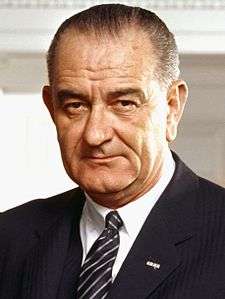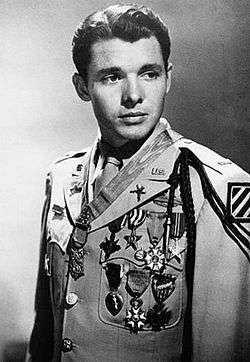Veterans of Foreign Wars
 | |
| Abbreviation | VFW |
|---|---|
| Established | September 29, 1899 |
| Founder | James C. Putnam |
| Merger of |
|
| Type | 501(c)(19) – American veterans' organization[1] |
| 44-0474290 | |
| Legal status | 36 U.S.C. 2301 – U.S. chartered corporation |
| Purpose | Fraternal, patriotic, historical, charitable, and educational |
| Headquarters | Kansas City, Missouri |
| Coordinates | 39°04′01″N 94°35′28″W / 39.0668144°N 94.591009°W |
Region served | Worldwide |
Membership (2016) | 1,234,985 |
| Keith E. Harman | |
| B. J. Lawrence | |
| William J. Schmitz | |
| National Council of Administration | |
| Publication | VFW Magazine |
| Subsidiaries |
|
| Affiliations | Student Veterans of America |
Revenue (2015) | $98,724,340[1] |
| Expenses (2015) | $89,099,521[1] |
Employees (2014) | 224[1] |
Volunteers (2014) | 3,000[1] |
| Slogan | "No One Does More for Veterans" |
| Website |
vfw |
Formerly called | Army of the Philippines, Cuba and Puerto Rico |
The Veterans of Foreign Wars, also known as the Veterans of Foreign Wars of the United States, Inc., is an American veterans' organization established on September 29, 1899, whose membership consists of armed-forces veterans who, as United States Army soldiers, United States Navy sailors, United States Marines, and/or United States Air Force airmen, served the U.S. in wars, campaigns, and expeditions on foreign soil or hostile waters.[2][3][4]
Purpose
The purpose of the VFW is to speed rehabilitation of the nation’s disabled and needy veterans, assist veterans’ widows and orphans and the dependents of needy or disabled veterans, and promote Americanism by means of education in patriotism and by constructive service to local communities. The organization maintains both its legislative service and central office of its national rehabilitation service in Washington. The latter nationwide program serves disabled veterans of all wars, members and nonmembers alike, in matters of U.S. government compensation and pension claims, hospitalization, civil-service employment preference, and etc.”[4]
Membership
Membership in the VFW is restricted to any active or honorably discharged officer or enlisted person who is a citizen of the United States and who has served in its armed forces "in any foreign war, insurrection or expedition, which service shall be recognized by the authorization or the issuance of a military campaign medal."[4]
The following is a partial list of United States campaign medals, ribbons, and badges the VFW uses to determine membership eligibility:
- Navy and Marine Corps Combat Action Ribbon
- Air Force Combat Action Medal
- Combat Infantryman Badge
- Combat Medical Badge
- Combat Action Badge
- Air Force Expeditionary Service Ribbon (with Gold Border)
- SSBN Deterrent Patrol insignia
- Navy Expeditionary Medal
- Marine Corps Expeditionary Medal
- Spanish Campaign Medal
- Philippine Campaign Medal
- World War I Victory Medal
- Nicaraguan Campaign Medal
- Yangtze Service Medal
- China Service Medal
- American Defense Service Medal
- American Campaign Medal (overseas service required)
- European-African-Middle Eastern Campaign Medal
- Asiatic-Pacific Campaign Medal
- Army of Occupation Medal
- Navy Occupation Service Medal
- Korean Service Medal
- Korea Defense Service Medal
- Armed Forces Expeditionary Medal
- Vietnam Service Medal
- Southwest Asia Service Medal
- Kosovo Campaign Medal
- Global War on Terrorism Expeditionary Medal
- Afghanistan Campaign Medal
- Iraq Campaign Medal
Cross of Malta
The Cross of Malta is the VFW's official emblem. The cross, radiating rays, and Great Seal of the United States together symbolize the character, vows and purposes distinguishing VFW as an order of warriors who have traveled far from home to defend sacred principles. Its eight points represent the beatitudes prescribed in the Sermon on the Mount: Blessed are the poor in spirit, the meek, the pure, the merciful, the peacemakers; blessed are they who mourn, seek righteousness and are persecuted for righteousness' sake. The eight-pointed Cross of Malta harks back to the Crusades, launched during the 12th century.[5][6]
The VFW emblem was inspired by the insignia of Military Order of the Loyal Legion of the United States (MOLLUS). The MOLLUS insignia was designed in 1865 by jewelers Bailey, Banks and Biddle and features a Maltese cross with radiating rays and an eagle emblem at the center. The ribbons of the two organizations are also similar, except that the VFW ribbon has a narrow yellow stripe in the center of the ribbon.
Prior to the Second World War, officers of the VFW wore a miniature shoulder strap showing the rank insignia of their office at the top of the ribbon of their emblem. This practice originated with the Grand Army of the Republic and continued with the Army and Navy Union and the United Spanish War Veterans.
Programs
Three national military services programs were created to promote community involvement, communication and financial support to qualified military service members: Operation Uplink connects deployed and hospitalized service members with their families through free phone calls. The VFW provides Free Call Days twice a month to service members deployed abroad. Since then Free Call Days have provided service members with more than 4 million free phone calls home. Unmet Needs was created through a corporate partnership to assist service members and their families who run into unexpected financial difficulties as a result of deployment or other hardships directly related to service. Unmet Needs assists with basic life needs such as mortgage and rent, home and auto repairs, insurance, utilities, food, and clothing. Unmet Needs helps meet unanticipated financial demands on service members' families that can not be remedied through existing means and provides service members with the comfort of knowing that their families have additional support stateside. The financial assistance is in the form of up to $5,000 in grants that do not need to be repaid. All grants are paid directly to the "creditor" (such as an electric company) and not to the individual. Each case is reviewed individually and acceptance determined by a committee. Military Assistance Program is the most direct connection between military units and local VFW posts. Through the program, posts have held going away, welcome home events, and unit picnics for numerous military units. In the last five years the program has helped Posts host more than 1 million service members and their families. The Adopt-a-Unit program also falls under Military Assistance Program and connects military units around the world with a local Post that can offer resources and support.[7] Annually, the nearly 1.7 million members of the VFW and subsidiaries contribute more than 8.9 million hours of volunteerism in the community, including participation in National Volunteer Week. From providing over $3 million in college scholarships and savings bonds to students every year, to encouraging elevation of the Department of Veterans Affairs to the president's cabinet, the VFW is there.[8]
History
The VFW was reorganized in 1913 as the result of a series of mergers of previous veterans organizations which consisted of veterans of the Spanish–American War and the Philippine Insurrection. The VFW modeled its organization, terminology and ritual on the Grand Army of the Republic—an organization for veterans of all ranks who had served in the American Civil War, but kept the "foreign" aspect of the organization, which excluded Civil War veterans. The VFW grew rapidly after the First World War with hundreds of thousands eligible veterans returning from the war. As the American Legion was originally composed exclusively of First World War veterans, this led to a friendly rivalry between the VFW and the American Legion as they competed for members and recognition as the premier veterans organization in the United States.
Between the two world wars, the VFW focused on advocating for benefits for veterans as well as combating communism. After the Second World War, millions more veterans were eligible to join the VFW. Membership steadily grew after the war peaking at about 2.5 million in 1993 with over 10,000 posts (local chapters) being established nationwide. During the turbulent 1960s era, the VFW supported the American involvement in the Vietnam War and condemned the counterculture trends of the era. Many VFW posts were unwilling to accept Vietnam veterans afterwards, but became more open to them as older veterans died off or their health did not permit them to attend meetings.
By the 2000s, the VFW faced a membership crisis due to the aging of World War II and Korean War veterans and the lack of enrollment from veterans of more recent conflicts.
Notable members
Notable members of the Veterans of Foreign Wars of the United States have included:[9][10]














 First Lieutenant Audie Murphy, Medal of Honor recipient
First Lieutenant Audie Murphy, Medal of Honor recipient Sergeant Alvin York, Medal of Honor recipient
Sergeant Alvin York, Medal of Honor recipient Carl Sandburg, Three-time Pulitzer Prize winner
Carl Sandburg, Three-time Pulitzer Prize winner Roger Staubach, Pro Football Hall of Fame inductee
Roger Staubach, Pro Football Hall of Fame inductee
See also
Notes
- 1 2 3 4 5 "Form 990: Return of Organization Exempt from Income Tax." Veterans of Foreign Wars of the United States. Guidestar. August 31, 2015.
- ↑ Mason, Jr. 1999, pp. 29, 39, 92.
- ↑ "National Bi-Laws, Manual of Procedure and Ritual" (2017 Podium ed.) 2016, p. 7.
- 1 2 3 "Veterans of Foreign Wars (VFW)". Encyclopædia Britannica. 2015. Retrieved November 14, 2016.
- ↑ Mason, Jr. 1999, p. 15.
- ↑ "National Bi-Laws, Manual of Procedure and Ritual" (2017 Podium ed.) 2016, p. 43.
- ↑ "Programs & Projects" (PDF). Veterans of Foreign Wars of the United States, Inc. Retrieved May 30, 2015.
- ↑ "About Us". Veterans of Foreign Wars of the United States, Inc. Retrieved May 30, 2015.
- ↑ Mason, Jr. 1999, pp. 9, 16, 47, 90–91, 118, 104, 132, 204.
- ↑ Ford 1979, p. 62.
References
- Ford, Gerald R. (1979). A Time To Heal: The Autobiography of Gerald R. Ford (1st ed.). New York: Harper & Row. ISBN 0-06-011297-2. LCCN 78020162. OCLC 4835213. OL 4731652M.
- Mason, Jr., Herbert Molloy (1999). VFW: Our First Century. Foreword by Senator Chuck Hagel. Lenexa, Kansas: Veterans of Foreign Wars of the United States. ISBN 1-88611072-7. LCCN 99-24943. OCLC 777720483 – via Addax Publishing Group.
- Veterans of Foreign Wars of the United States Congressional Charter, National By-Laws, Manual of Procedure and Ritual (2017 Podium ed.). Kansas City, Missouri: Veterans of Foreign Wars of the United States. 2016.
Further reading
- Bottoms, Bill (1991). The VFW: An Illustrated History of the Veterans of Foreign Wars of the United States. Foreword by Senator Bob Dole. Rockville, Md.: Woodbine House. ISBN 0933149344. LCCN 89040627. OCLC 22593204. OL 8387800M.
- Proceedings of the 99th National Convention of the Veterans of Foreign Wars of the United States [Summary of Minutes] (Report). Washington: GPO. 2000 – via Internet Archive.
- Proceedings of the 100th Annual Convention of the Veterans of Foreign Wars of the United States [Summary of Minutes] (Report). Washington: GPO. 2000 – via Internet Archive.
- White, Dean A., ed. (1999). Watch on the Rhein: A History. Wiesbaden, Germany: Watch on the Rhein Post 27, Veterans of Foreign Wars of the United States.
External links
- Official
- Official website
- Veterans of Foreign Wars Foundation
- Veterans of Foreign Wars National Home for Children
- General information
- Commemoration of the 50th Anniversary of the Vietnam War at the United States Department of Defense Vietnam War Commemoration Program Office
- Proceedings of the Annual Convention of the Veterans of Foreign Wars of the United States at The Online Books Page
- Veterans of Foreign Wars Politician members at The Political Graveyard
- World War I Centennial Commission at the United States Foundation for the Commemoration of the World Wars